THAMES TALBOT LAND TRUST
TaTTLer
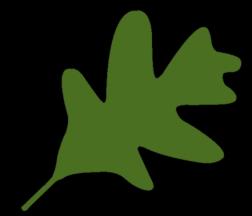

Celebrating a Decade of Daria
April 7, 2024 marked Daria’s 10-year anniversary as a staff member at TTLT. We wanted to make sure that this momentous occasion didn’t pass us by, so I sat down with Daria to ask her to tell us a little bit about her experience over the last 10 years.
Darby: How did you come to know and love TTLT, and what was the journey to get to where you are today?
Daria: My connection to TTLT started with Jane Bowles. I was a graduate student at Western University and became interested in doing some restoration projects on campus. Our small team was advised to seek out Jane for ideas and support. I learned so much from her in working on those projects and when I graduated in 2008, she suggested I volunteer with TTLT to continue doing similar work. Some of my first events were a Garlic Mustard pull at the Eberhardt farm and helping with the Catholic Central Environmental Leadership Program at Meadowlily Nature Preserve. I had so much fun and enjoyed the company of other enthusiastic and passionate TTLT volunteers immensely, so I kept coming back! Eventually I joined the Property Management Committee and was a steward at Meadowlily Nature Preserve. When the Conservation Property Manager role at TTLT was posted, I was thrilled at the oppor-
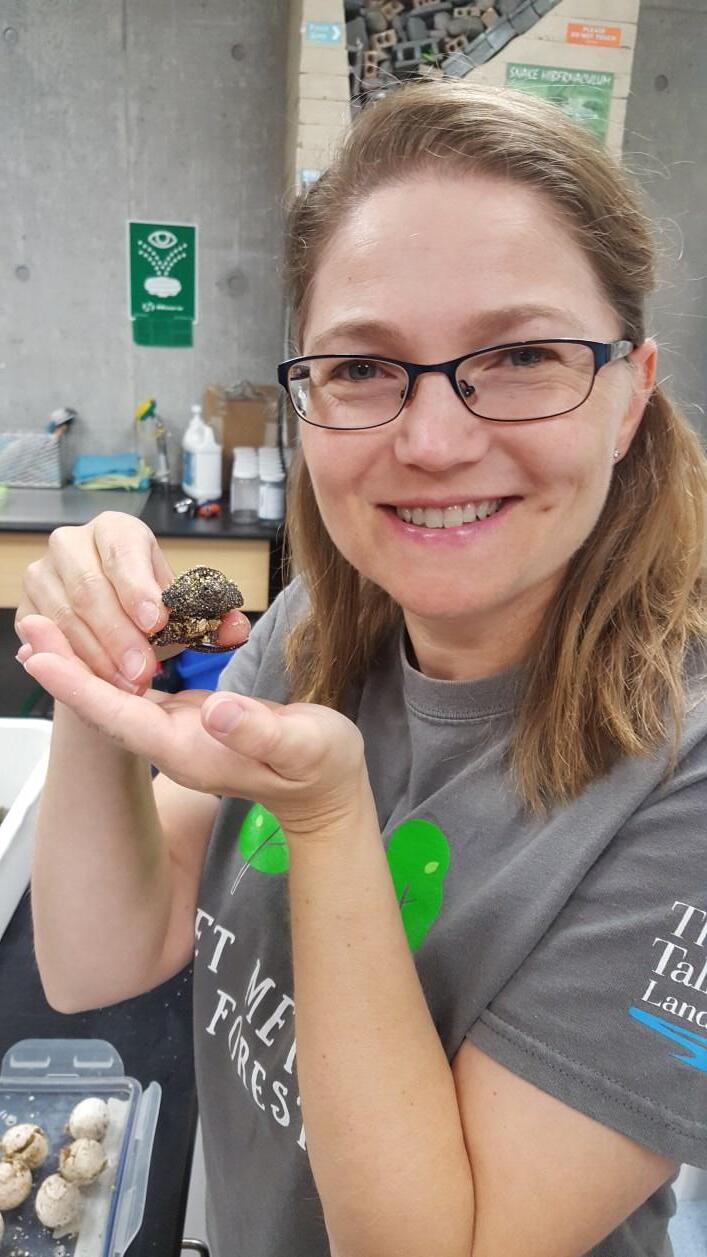
DariaholdinganewlyhatchedSnapping Turtle.PhotobyRebeccaLaunchbury.
tunity to make TTLT my fulltime commitment. I was fortunate to get the position, which I held from 2014 to 2020, at which point I became Acting Executive Director and then Executive Director in 2021. My title has changed a few times but my love of TTLT and nature started long before I worked here and continues to this day. I loved my time in the field pulling invasive plants, doing inventories, finding rare species, building boardwalks, and creating new habitats. The work also gave me a deep understanding of our mission, and this helps me as a leader in my current role as Executive Director. Jane inspired my love of plants while I was a student and that has stayed with me to this day. I am one of those people who slows down hikes because I'm looking at plants! I am so grateful to Jane and all the volunteers who welcomed me into the TTLT family when I was a "newbie" and are a core part of my TTLT journey - I have learned so much from all of you!
Darby: How has your impression of TTLT changed from when you started to today?
Daria: When I joined TTLT, I was the third staff member with the organization. However, our small but
Celebrating a Decade of Daria
Upcoming Events
Can I Eat This?
Photography Feature: ‘Tis the Season
Photo Contest Alert
Introducing the Livingstone CEA
Hawk Cliff Woods Expansion Update
Volunteer Appreciation Remarks
Giving Tuesday: Tilda the Toad

Logic Puzzle: Snake Sightings
Learnmoreandregisterforeventsat www.thamestalbotlandtrust.caorcontactusat 519-858-3442.
Passport to Nature: Writing the Wild Nov7,2024from7PMto8:15PMonlineviaZoom
Learn nature, environmental, and place-based writing from renowned nature writer Janisse Ray.
Passport to Nature: Backyard Birding
Nov.17,2024from10AMto12PMatWestminster PondsCentre
Grab your favourite hot beverage, a pair of binoculars, and get bundled up to birdwatch at the Westminster Ponds Centre bird feeders!
Volunteer Event: Seed Processing Workshop Nov.19,2024from6:30PMto8:00PMatLondon CivicGardenComplex
Time to Renew Your Membership!

People are the foundation of any community and our community needs caring people like you! Together, we are able to accomplish amazing things and can create a better future for tomorrow. Renew your connection to nature by renewing your membership today.

Memberships run from January 1st to December 31st, and memberships purchased after October 1st will carry over to the following year.
-
Learn about native plant seeds and help us process them for future restoration and outreach initiatives.
Volunteer Event: Woody Invasive Removal
Nov.20,2024from12PMto3PMatWardsville Woods
Help us remove woody invasive species to restore native habitat!
Passport to Nature: Buds and Bark
Jan.19,2025from1PMto3PMatMeadowlilyNaturePreserve
Dust off your snowshoes for a leisurely midwinter exploration to identify trees by their buds and bark.
Passport to Nature: March Break Nature Arts and Crafts
Mar.11,2025from10AMto12PMatWestminster PondsCentre
Join TTLT for a selection of nature-themed arts and crafts activities!
We hope to see you soon!
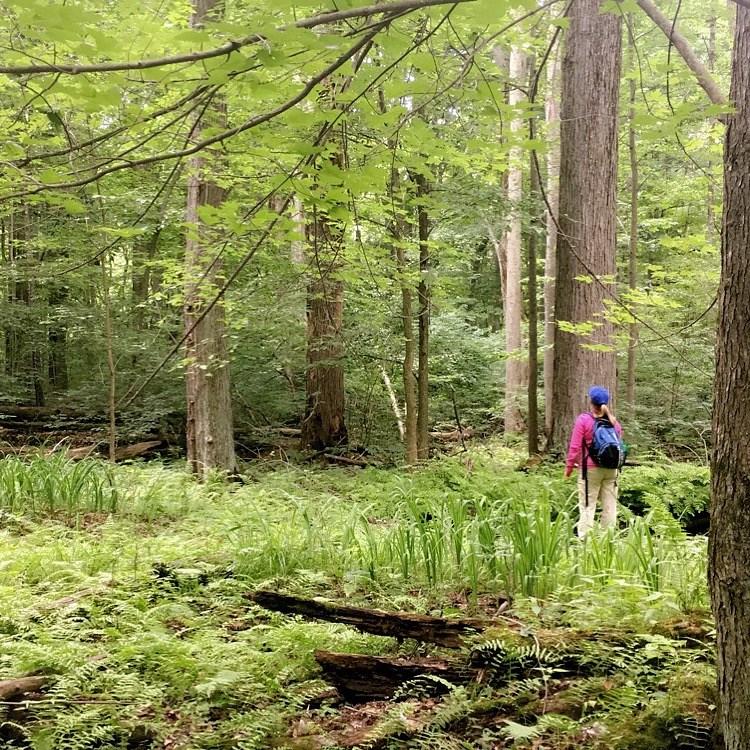

mighty team was much larger because of the dedicated support from many volunteers. Although our staff team is larger now, the contribution of volunteers is still key to TTLT's success. In the past 10 years, TTLT has grown in people, land, partnerships, and reputation. Our staff team has more than doubled and our volunteer count is growing daily. In 2014, we protected 999 acres (yes, really 1 acre short of a thousand) and today we protect 2,336 acres. Where we used to protect 1 nature reserve per year, we are now protecting 2-3 per year (and that number will go up next year!). We have built strong partnerships with nature organizations, municipalities, Indigenous communities, businesses, and more! We are recognized as a leader among Ontario's land trusts. The growth and success of the organization has been due to a solid foundation laid by the organizing committee who founded TTLT and the many committed staff and volunteers who have continued that work over the years. I am lucky to be part of this fantastic team and am so proud to see how far TTLT has come. But there is more to do and lots of excitement ahead as we build momentum to grow even more.
Darby: What have you learned about yourself while working at TTLT?
Daria: Where to start? I learned that I squeal with delight whenever baby turtles are around or even at the thought of them. I found out that I actually really enjoy meetings, even though many other folks find
them tedious. I learned to be more patient after restoration projects because it takes a few years to see the full results. I learned to appreciate that my connection to nature is a big part of me. I learned that this connection aligns more with Indigenous world views than the settler world view I grew up with. I learned to be more optimistic in the face of the many challenges the world faces because I know the work I do at TTLT makes a difference.
Darby: To finish off, please tell us a funny TTLT story.
Daria: During my first summer with TTLT, I was with our summer staff Kelly and Drew at the Five Points Forest – Driedger Tract. We were walking around the edge of the marsh, and we had discussed the soft mucky soils we would encounter. The trick was to always step on roots or mats of vegetation, never directly onto the black soil. Well, it wasn't long before Kelly stepped into a soft spot and ended up stuck up to her thighs in the black muck (fortunately in waders). She tried to get out, but all her attempts just sunk her deeper. She needed help to get out, but


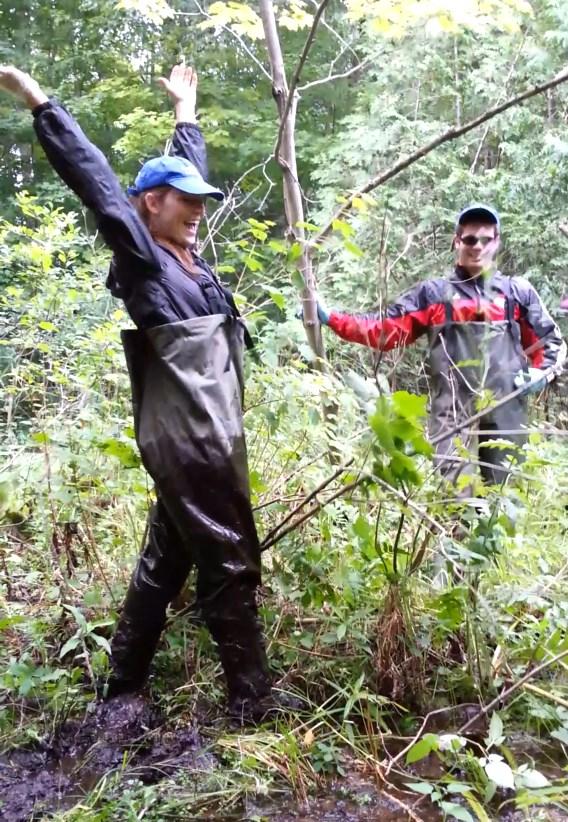
ScreenshotsofKellyinthemudandDrewhelpingherout.FootagebyDariaKoscinski.
Drew and I could not stop laughing at the situation, which I caught on video. After a good laugh, we did get her out and all was ok. Fast forward a few years later at the same marsh. I was working with Colin and Rebecca looking for turtles. As I tried to climb back onto the more solid ground, I realized I was stuck. The marsh struck again! It was my turn to need help and Colin had to pull me out. We all had another good laugh. Besides these incidents, the black muck has claimed many rubber boots over the years.
-DarbyAldersonandDariaKoscinski
Can I Eat This?
If you’ve ever spent time in nature with children, you have likely heard the question: “Can I eat this?” Often this is accompanied by a child lifting an unknown plant to their mouth and an immediate cry of “DON’T EAT THAT!” from a concerned guardian. While this knee-jerk reaction is justified and with safety in mind, it has the potential to send an unintended message: nature is dangerous and is something that should be feared.
Unfortunately, this belief has been passed down through generations. Canadians have become increasingly disconnected from nature with the rural population shrinking from 51% in 1921 to 18% in 2023. Each year we grow more urbanized, and our collective knowledge about wild foods dwindles. As we distance ourselves from nature, we continue a cycle that promotes fear, discourages curiosity, and degrades our sense of responsibility to the land. So how do we reconnect?

goes beyond that. Historically, Buckthorn was used to produce a strong laxative. This purgative, or cathartic, quality is recognized in its scientific name Rhamnus cathartica. Buckthorn is also of artistic value. The dense hardwood can be used for small woodworking crafts. In fact, a retired University of Guelph professor is investigating whether it can replace the endangered Brazilian Rosewood in guitar manufacturing. The bark and fruit are historically significant as natural sources of yellow and green dyes. “Sap Green” paint was made from the berries, which are still used to produce natural watercolour paints.
Other species, like Garlic Mustard, were brought here for food and medicine. The nutrientdense leaves provide a reliable source of fresh greens in early spring and the bitterness of the fresh leaves is removed if dehydrated before consuming.
It starts with a process of acknowledgement, rediscovery, and, dare I say, compassion for invasive plants. Land and culture are deeply intertwined. The land tells a story to those who listen. A glance in any direction reveals a fragmented landscape scarred by the ongoing impacts of colonization. We all share a history of displacement. Where generations of native plants once grew, introduced species now grow in their stead. Traditional foods and medicines forcibly replaced by introduced foods and medicines.
Sometimes we “wage war” against plants that once were culturally significant. We demonize them for colonizing the land, as if they choseto be here. To minimize their impact, it is up to us to rediscover the relationships that led to their introductions.
Species, like Common Buckthorn, were introduced as ornamentals; however, the ethnobotany
Harvesting and dehydrating Garlic Mustard is now an annual tradition in my household. We gather to collect and wash the leaves, load them into the dehydrator, and grind them into a greens powder once dry. Jars are then gifted to friends and family, and each subsequent meal carries fond memories of preparing food together.
While this new tradition will not eliminate Garlic Mustard from the landscape, it provides a sense of community and a space for learning. Each year, the patches grow sparser and new species emerge from the soil. The success of our caretaking is measured by the decreasing size of our harvest. Despite the reduction in food, the tradition lives on and each new species that appears is welcomed by my family asking: “Can I eat this?”
-PaytonLandsborough
https://www.statista.com/statistics/271208/urbanization-in-canada/ https://www150.statcan.gc.ca/n1/pub/11-630-x/11-630-x2015004-eng.htm
Photography Feature: ‘Tis the Season

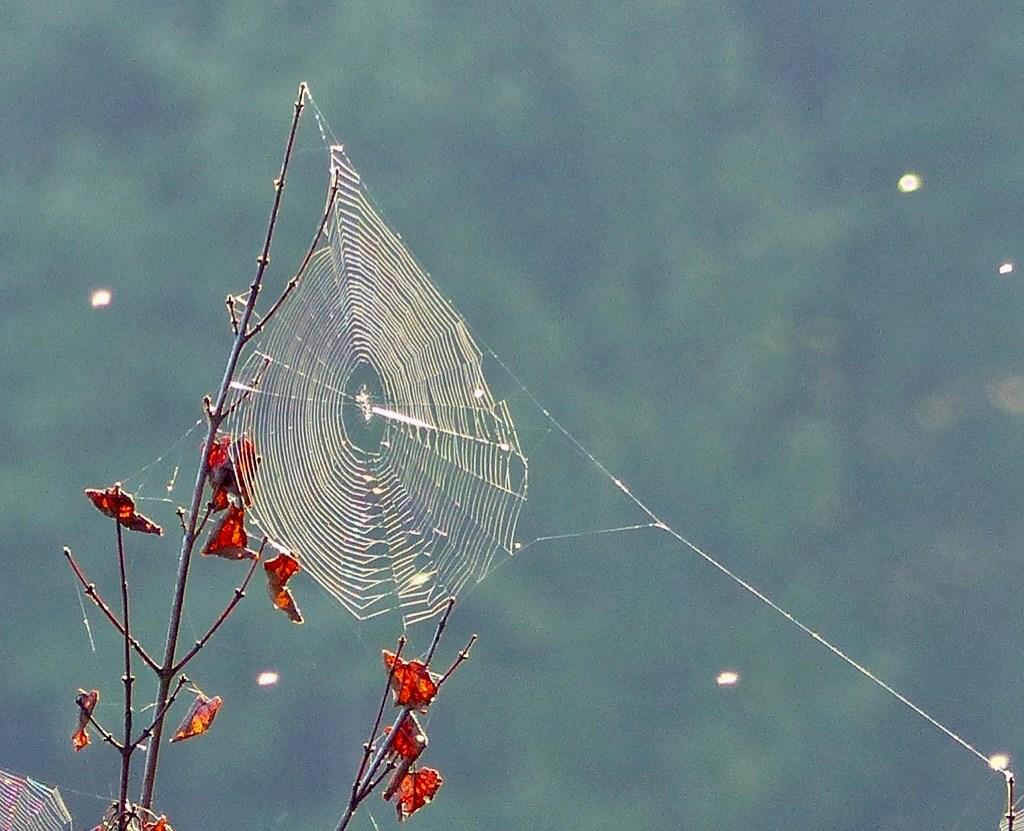







From December 1st to December 31st, TTLT is holding a photo contest for the cover of the next Passport to Nature program booklet! We want to see your landscapes, your critters, and your alluring nature photos that will help draw in the next year of participants. The rules are simple:
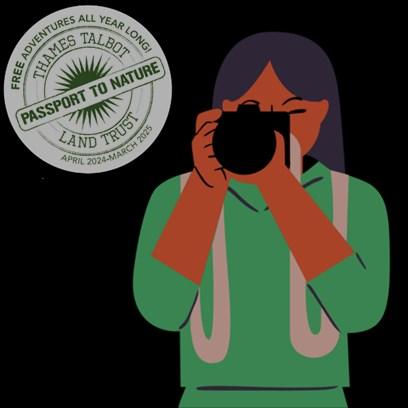
1. Submit up to a maximum of 3 photos.
2. Subjects of the photos should align with species, habitats, and events that occur within the Carolinian Zone (think close to home).
3. Submissions will only be accepted between December 1st and December 31st. The winner will be notified in the new year.
Don’t wait – get your best photos ready to send to passport@ttlt.ca with the subject line “Photo Contest”. Details are available on the Passport to Nature webpage.
Introducing the Livingstone CEA
The Land Securement Committee has been very active this year, visiting multiple sites for potential land protection projects. One of the more recent projects that has been finalized is the Livingstone Conservation Easement Agreement (CEA).
The Livingstone CEA is the first CEA completed under TTLT’s Community-led Land Protection for a Sustainable Future program. CEAs are an important tool to conserve private lands and protect nature faster in a rapidly developing landscape. CEAs are special agreements that outline protective conservation measures that are applied to the land title. David Livingstone and Lynn Hjartarson, the Livingstone CEA land holders, were very eager to collaborate with TTLT to protect the 40 hectares (100 acres) of land featuring woodlands that are designated as Natural Heritage in the Middlesex County official plan.
The protected area contains some significant ecosystems such as Fresh Moist Black Walnut Lowland Deciduous Forest and Gray Dogwood Mineral Deciduous Thicket Swamp. In Ontario, Fresh Moist Black Walnut Lowland Deciduous Forest is recognized as provincially rare, with estimates indicating fewer than 100 occurrences. Gray Dogwood Mineral Deciduous Thicket Swamp represents a relatively prevalent ecosite, yet it has fewer than 100 documented occurrences within Ontario. The forests are in relatively good condition and contain some very large trees, particularly along the creek slope where logging has never been possible. Native tree species include Sugar Maple, Black Maple, Bur Oak, Swamp White Oak, Black Cherry, Bitternut Hickory, Shellbark Hickory, and Black Walnut. The site also boasts a remarkable array of unique plant life and animal species such as spring ephemerals, the Short-eared Owl, the Eastern Wood-pewee, an assortment of cold water fish, and some species at risk.
The farm has been in David's family since the 1800s. Nearly all of the cleared lands have been restored to natural habitat. David's father started tree planting nearly 30 years ago. That legacy continues with extensive restoration projects over the last 10-15 years that have added 23 hectares (56 acres) of new habitat including tree plantings, wetlands, and prairie. The existing and new habitats provide homes to numerous wildlife. David's wish is for the site to regen-

Livingstoneforestlandscape.PhotobyCathyQuinlan.
erate into a Carolinian Forest and the seeds are in place to make that wish come true. The CEA will ensure that these restoration efforts are protected for the long term.
The Livingstone CEA is only the beginning of what TTLT plans to accomplish with the program. Site visits and conversations have already begun for several other potential CEA projects, and we’re excited to work with future land holders as committed and passionate as David and Lynn. For more information about the Community-led Land Protection for a Sustainable Future program and how you can leave a lasting legacy, contact us at land@ttlt.ca or 519-8583442.


Volunteer Appreciation Remarks
Every year, we celebrate our volunteers at our annual Volunteer Appreciation event. More recently, we have been acknowledging the hard work and effort of a select few that really put in their time over the last year. Here are some snippets of our appreciation for the 2023-2024 selects!
Rob Paterson: “Rob is always ready to tackle the next task and is full of ideas for how to approach challenges through a new lens (camera or otherwise). He can be relied on to crack jokes and make everyone laugh. Rob likes to play with fire and is first in line to wield the propane torch and fry the persistent weeds in the Auzin's Wildflower Garden walkways. He always sees a task through until the end, even if that means arriving early/staying late or a group vocal performance of Hillary Duff's "Come Clean".”

PhotobyPaytonLandsborough.
Susan Price: “Susan is kind, patient, and thoughtful. Her interests and methods of engagement are broad, making her impacts wide-reaching. Whether doing stewardship, outreach, or participating in Passport to Nature events, she is eager to listen, learn, and provide insight, which often leads to wonderful conversations. Her sharp wit and calm demeanor make her a joy to work with. She is incredibly dedicated to everything she does, and we know the baby turtles and snakes are better off because of her.”
PhotobyPaytonLandsborough.
PhotobyDarbyAlderson.
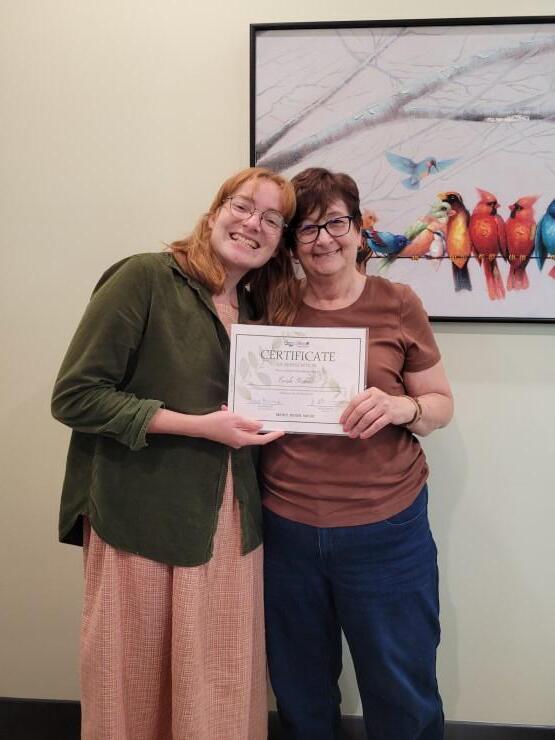

Trish Grant: “Trish brings so much joy and wisdom to our office days. When we first put the call out for digitizing help, we thought the task of sifting through files and wrestling with our stubborn scanner would drive anyone away, but she is incredibly perseverant and willingly stayed (and returned) with a smile on her face and energy to spare. She has truly become a cherished part of our team.”
-ExcerptsfromAveryVojvodin’sspeeches
Giving Tuesday: Tilda the Toad
Tilda the Toad is going on an adventure this Giving Tuesday to save her pond!

Tilda the Toad loves her pond. It has all the food, water, shelter, and entertainment a girl could ask for. Tilda’s pond has changed a lot over the years, but one morning she woke up and realized just how much everything had changed. Where once there was open water, many interactions with her neighbours, and an abundance of food now stood tall, reedy plants too dense to move around or play in. Many of her neighbours had moved and her diet had become very monotonous. Nothing felt right anymore, and she needed help! She wondered what a little toad like her could do, but then remembered the TTLT Stewardship team could help her. They’d know what to do!
Tilda will travel near and far to find the Stewardship team. She’ll meet old friends and new as she makes her way across several TTLT nature reserves, following rumoured sightings and the subtle trail of the team, always seeming to be one step behind.
Help Tilda find the Stewardship team by engaging with her story via email and on our socials leading up to Giving Tuesday. Stay tuned!
Logic puzzle: Snake Sightings
Snakes are an important part of a healthy ecosystem. Ontario is home to 17 snake species, some of which can be found at TTLT nature reserves. A group of people who love snakes visited five sites and recorded the size of the first snake identified during their visit. One of the naturalists provided the meanings of the Latin genus names. Using logic and the clues below, work out the size of each specimen, the meaning of its Latin genus name, and where it was encountered. Enter a star for each match in the grid, and an “X” for every negative match.
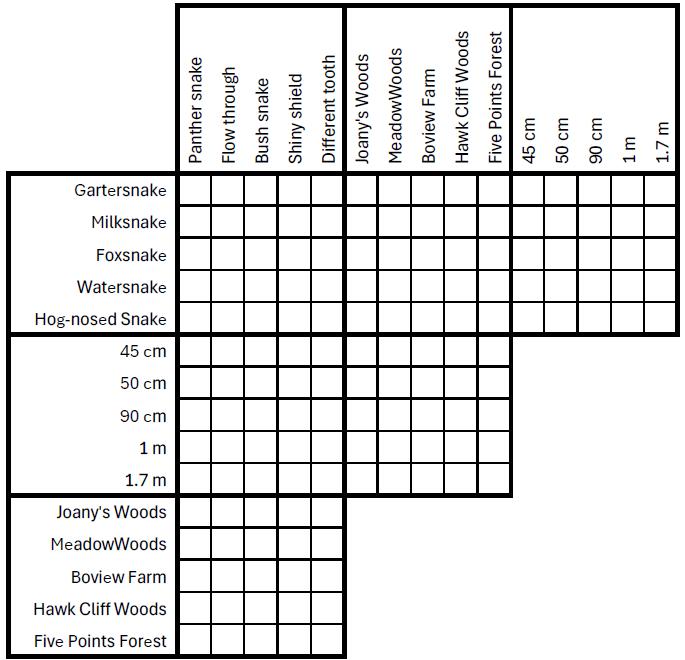
*Although the snake species describedinthispuzzleexistatsome TTLT nature reserves, their true locationshavenotbeensharedto ensuretheirsafety.


P.O. Box 25054
London, ON N6C 6A8
519-858-3442
www.thamestalbotlandtrust.ca
1. The Northern Watersnake was seen swimming on a pond at MeadowWoods; it was shorter than the snake found at Hawk Cliff Woods.
2. The genus name meaning "flow through" does not apply to the snake found at Joany's Woods, which was 50 cm long, or the one found in Hawk Cliff Woods.
3. The Eastern Gartersnake's genus name means "bush snake"; the specimen was shorter than the Eastern Hog-nosed Snake.
4. The Boview Farm snake's genus name is derived from the Greek for "shiny shield". The snake was twice as long as the Hog-nosed Snake.
5. The genus name meaning "panther snake" applies to a specimen that was longer than the one whose genus name means "different tooth".
6. The Eastern Foxsnake's genus name does not mean "shiny shield".
Thames Talbot Land Trust (TTLT) is a registered charity. Our mission is to protect, restore, and nurture nature within Elgin, Middlesex, Oxford, and Perth counties and the City of London, contributing to a stable climate, human well-being, and healthy habitats for all species. These lands and waters have been under the continuous care of Indigenous Peoples from time immemorial. We are committed to working in a spirit of reconciliation and collaboration to build a greener and more inclusive future for all people.
